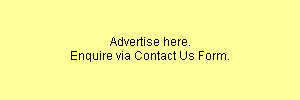
Originally Posted by
Urban Aquaria

You'll definitely need a Co2 drop checker to monitor the Co2 levels in your tank... without it you'll be guessing alot more and have to rely on the fishes themselves to check Co2, hence casualties will tend occur.
Co2 from pressurized tanks is definitely more "pure" than that from DIY systems, hence the Co2 concentration is much higher per bubble injected.
30 tetras and a few otos is still a relatively okay bio-load for a 2ft tank, i guess most likely its the sudden changes in Co2 concentration while you are still adjusting the system which affected the weaker fishes.
Usually when changing Co2 systems, like bennyc mentioned, its best to start low first and then adjust the Co2 injection very slowly in small stages, so that the fishes can gradually adapt to it over the period of a few days.
The ideal BPS injection rate is very subjective and will differ from tank to tank (even those of the same volume), it depends alot on the efficiency of the diffuser system, the types and density of the plants, circulation, light intensity/duration, nutrients, livestock bio-load etc. You'll have to tweak it over time to find the best combination.
Just an example, i currently also run just 0.5-1 BPS in my 2ft planted tanks and the drop checker is a constant light green during lights on with plants pearling, but that's in part because i'm using inline reactors which achieve near 100% Co2 dissolve rate. Previously when i used in-tank diffusers and inline diffusers, i was injecting up to 2-3 BPS in order to achieve equivalent Co2 levels in the same tanks.









 . However, I will try this and probably just use a big tub. I have a second canister filter that I have been cycling for a long time in a tub.
. However, I will try this and probably just use a big tub. I have a second canister filter that I have been cycling for a long time in a tub.
 Reply With Quote
Reply With Quote







Bookmarks